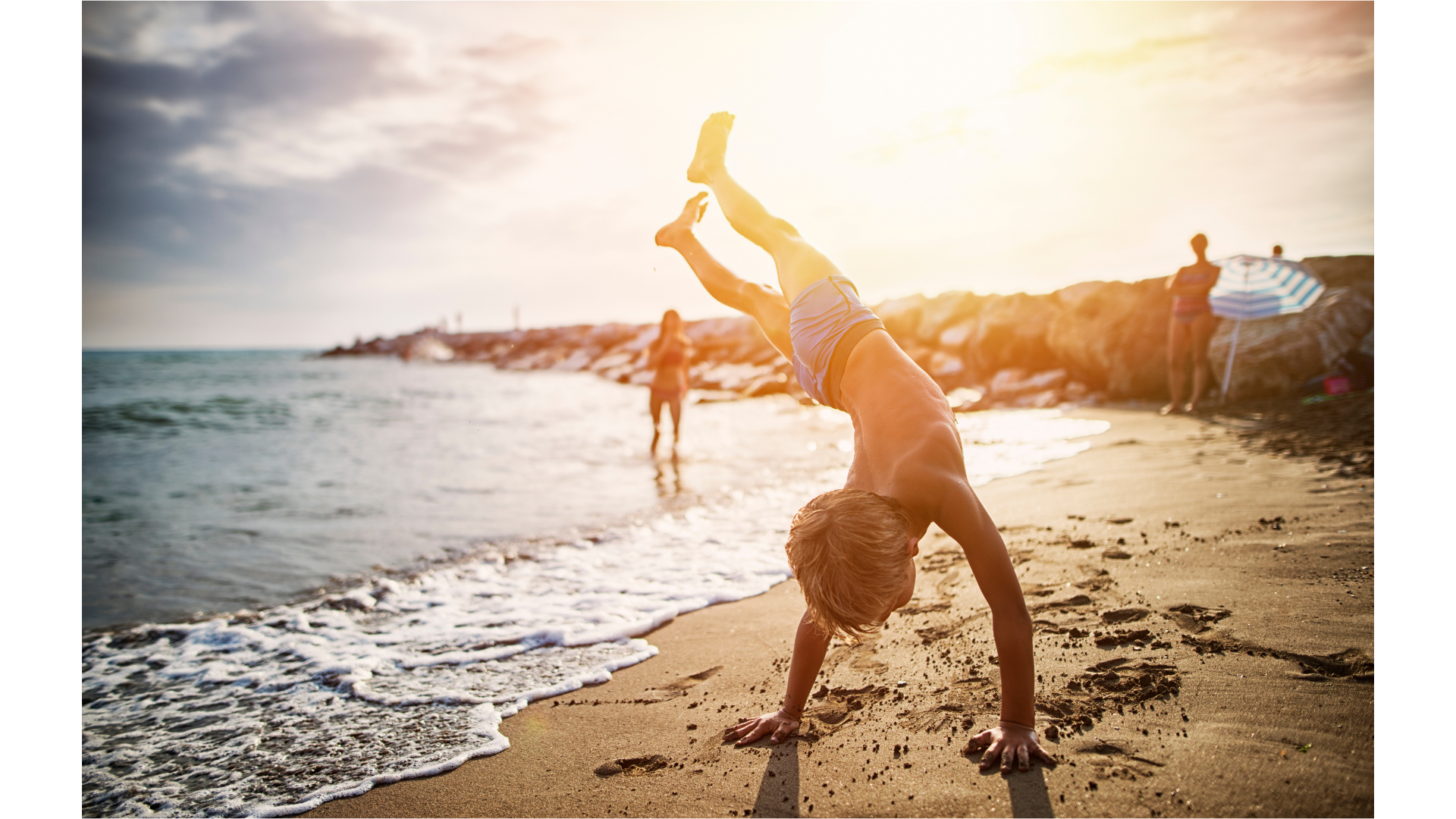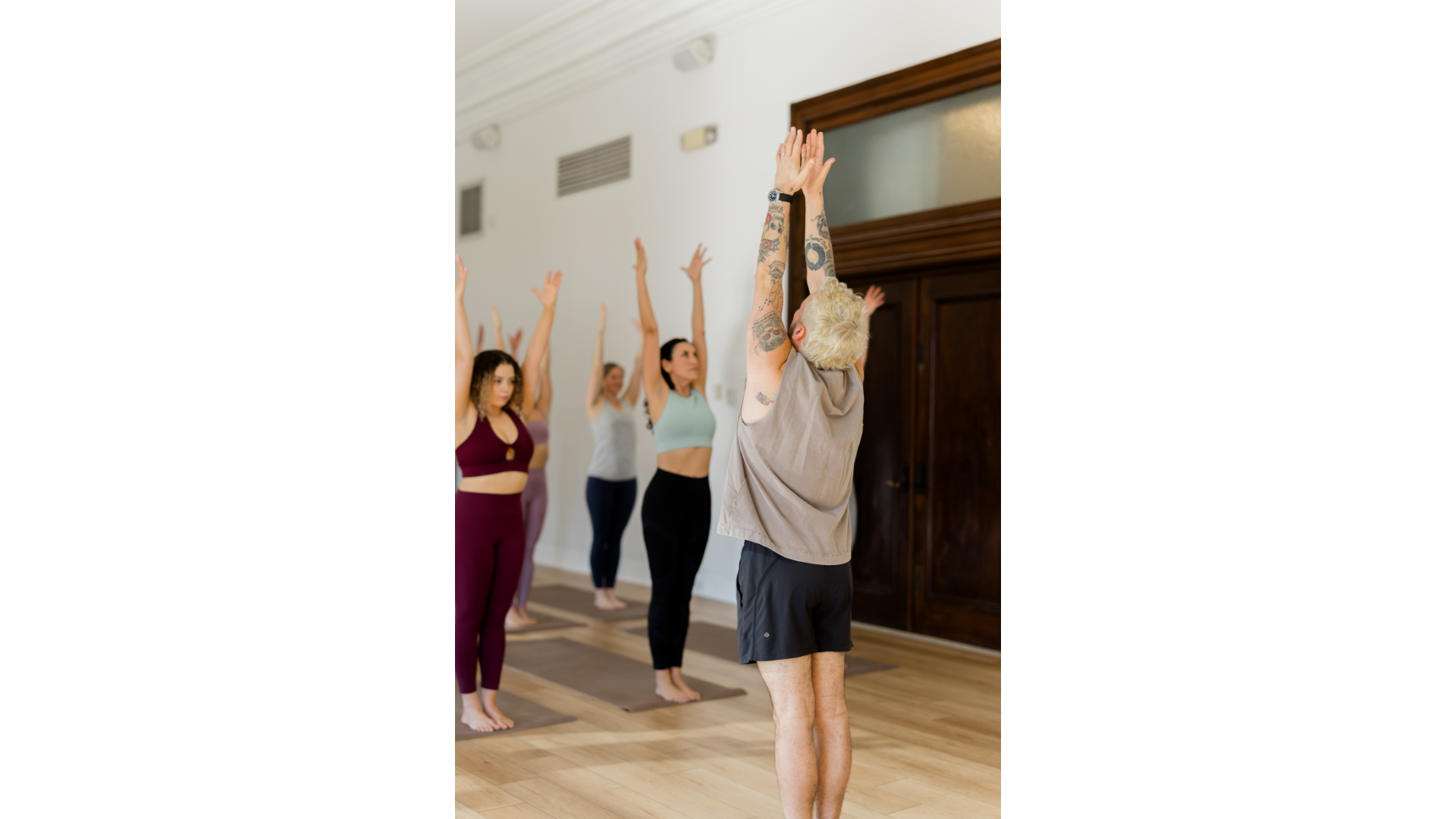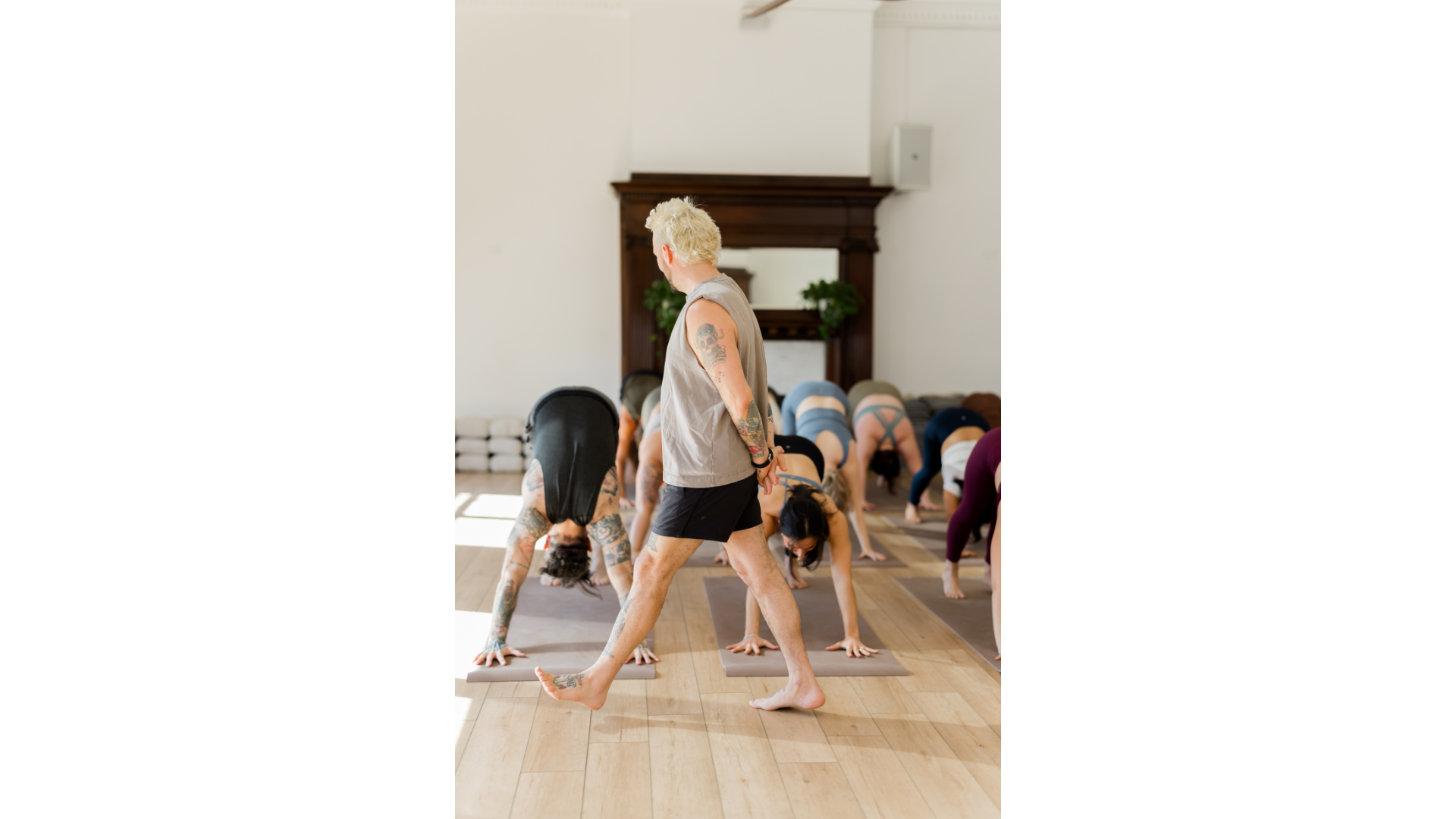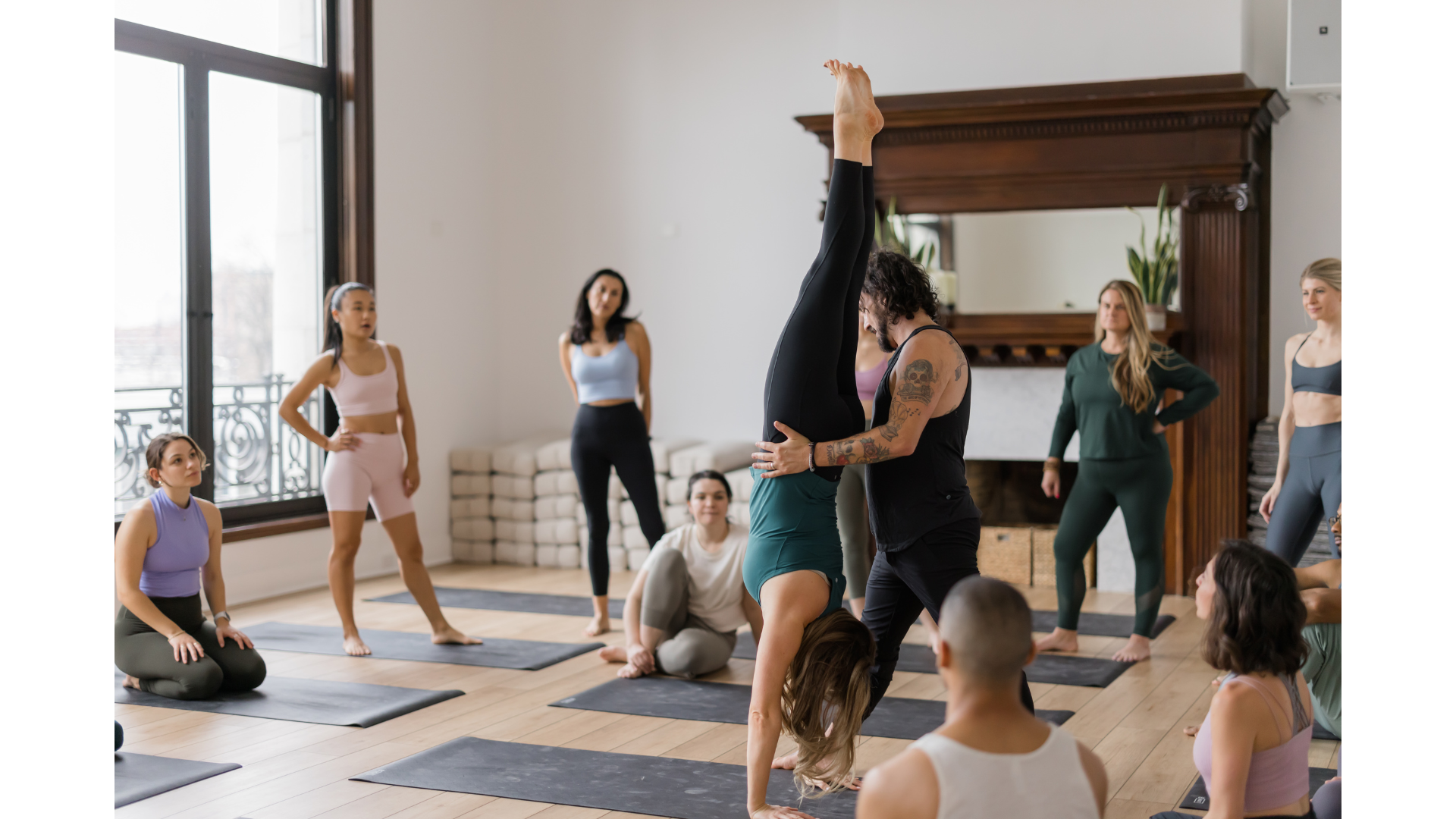If you buy through our links, we may earn an affiliate commission. This supports our mission to get more people active and outside.Learn about Outside Online's affiliate link policy
Keep Falling Out of Handstand? The Solution Might Be Simpler Than You Think.

(Photo: Imgorthand | Getty)
Handstand is one of those yoga poses (asana) that’s wrapped in myth—that is, myth of our own making. Some see it as the Everest of asana—something only the most experienced practitioners get to summit. Others see it as a party trick—flashy, impressive, maybe even a little indulgent.
But think back to being a kid—throwing yourself upside down on the grass, tumbling through the air, not caring whether you stuck the landing or rolled out laughing. That spirit is the embodiment of Handstand.
Adho Mukha Vrksasana (Downward-Facing Tree) is a practice in which you explore lightness, rhythm, and play. Patanjali spells out the same principle in the Yoga Sutras when he explains abhyasa and vairagya, or practice and letting go. We keep showing up, doing the work, and building the actions in our body day after day. And, at the same time, we continue releasing our grip on the outcome.
Handstand teaches us this balance. You can practice for years and still fall out of the pose more often than you hold. That doesn’t mean you’ve failed. The key is in the attempt, not the stick. Just like when you were a kid, the pleasure wasn’t in “nailing it,” but in the fearless, playful ride of taking yourself upside down.
What Yoga Tradition Teaches Us About Handstand
The Sanskrit name for Handstand says a lot. “Adho mukha” (“downward facing”) points you toward the earth. “Vrksa” (“tree”) roots you in stability. In Handstand, that tree flips upside down, asking you to grow your roots through the palms, steady the midline of the body, and let the branches—that is, legs—extend toward the sky.
In Iyengar yoga, the pose is often called Full Arm Balance rather than Handstand. That distinction, too, is telling. Whereas in other inversions, such as Supported Headstand (Sirsasana) and Shoulderstand (Sarvangasana), the body is supported by a wide base—the head, arms, or shoulders. They’re inversions of stability, and because of that you can stay there longer, diving into their effects on the circulation, breath, and mind.
Handstand is different. The entire body balances on just the two palms, which makes it more precarious. The teaching here isn’t in duration but in clarity of action, precision in alignment, steadiness of mind, and lightness of body. Think of it this way: You’re not “kicking up into a handstand.” You’re growing a tree from the ground up and allowing yourself to float upward through space.
How to Do a Handstand: The Mind
Handstand isn’t only about strength—it’s about rhythm, clarity, and, maybe most importantly, play. If you try to muscle your way up with a hard kick, you have the potential to fly past your destination. But if you let the breath set the pace and the actions of your body line up, suddenly there’s lift. Think about being a kid again, tossing yourself upside down without hesitation. That willingness to fall, to laugh, to get back up—bring that with you.
Falling out doesn’t need to be dramatic. Practice cartwheeling gracefully to the side, or simply stepping down with control. A smooth exit keeps fear from creeping in and gives you the courage to try again. And don’t be shy about using the wall—it’s not a crutch, it’s a teacher, giving you real-time feedback about the linear line your searching for..
Try weaving handstand attempts into the flow of a vinyasa class, when your body is warm and your breath has a natural groove. Over time, you’ll notice progress comes through repetition. You show up, you fall, you float, you laugh, you repeat.
How to Do a Handstand: The Body
Here’s a short sequence that can help you build up to Handstand.
1. Mountain Pose
Start simply by standing tall in Mountain Pose (Tadasana).

2. Upward Salute
Sweep your arms overhead into Upward Salute (Urdhva Hastasana), stretching up through your fingertips as your heels root down. Feel that upward pull. It’s the exact same energy you’ll channel through your palms when you’re upside down.
3. Tree Pose
From there, shift into Tree Pose (Vrksasana). Press your standing leg firmly into the mat as your lifted foot presses into your thigh. Suddenly you’re balancing. This is Handstand in disguise—rooting downward while lengthening upward, holding the midline, and allowing yourself to feel steady and strong even as you feel light and free.

4. Downward-Facing Dog
Next, fold forward and step back into Downward Dog. Press your hands into the mat, lift your sitting bones high, and let your breath create space between your ribs and pelvis. This is your launchpad. It’s also a chance to feel into the palms of your hands as they connect with the mat.
5. Hop Into Standing Forward Bend and Back
Now start to play. Hop forward from Down Dog into Standing Forward Bend (Uttanasana), then hop back again. No pressure to stick the landing—just let it be buoyant and fun. These transitions teach you what it feels like to glide through space while being both light and steady. Be springy, be bouncy, and landing with bent knees.
6. Handstand Hops
Once you’ve found your groove, start trying a few Handstand hops. From Down Dog, lift one leg high, push the floor away through your palms, and hop with the other foot. Don’t think about kicking up—think about floating up. Even if you just hover for a second, you’ve touched the essence of the pose.

7. Handstand
And then, when you’re ready, go for the full thing. Step a little closer to your hands, sweep one leg high, and as you exhale, let the other leg rise to meet it. Suddenly you’re in Handstand. Press the hands down, stretch the legs long, and breathe. Maybe you hold for a moment. Maybe you cartwheel out. Either way, you’ve done it—the practice is in the attempt, not the duration.
How to Keep Your Perspective
Handstand isn’t really about balance—it’s about presence. When you’re upside down, there’s no room for distraction, no room for overthinking. There’s only breath, body, and gravity in conversation with one another. Some days you’ll find the float, other days you’ll topple right back down. Both are practice.
The real lightness comes from not clinging to the result and instead showing up repeatedly with curiosity, rhythm, and a little of that fearless play we knew as kids. It’s the practice of abhyasa and vairagya—practice and letting go—that keeps you steady, whether you stay balanced for a breath or immediately fall back to earth.
Float steady, fall often, play always. That’s yoga.